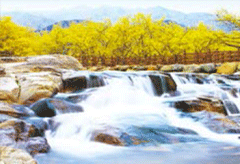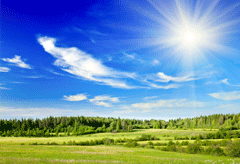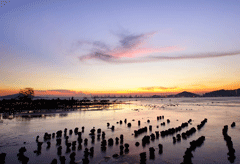Clean Natural Environment
Jeollanamdo is a productive land with optimal natural conditions for the eco-friendly era, and boasts mother-like warmth and excellent natural healing powers.
-

Fresh Air
The concentration of negative ions of oxygen in Jeollanamdo, also known as “vitamins in the air”, is 8 times higher than that of the country’s capital (at 1,736 ions/㎤ compared with 200 ions/㎤) and the quantity of hazardous heavy metals in Jeollanamdo is 1/30 of the environmental standards requirements.

Clear and Mild Climate
Jeollanamdo receives 2,138.8 hours of sunshine on average per year, slightly higher than the national average of 2,122.5 hours. The average temperature is 14℃, higher than the national average of 12.9℃.

Clean and Healthy Water
Spring waters in Jeollanamdo are affluent with minerals (calcium, magnesium, and potassium), germanium, and selenium, which enhance anti-cancer functions, immunity, salvation, and physiology.

Highest Solar Radiation in Jeollanamdo
Solar radiation in Mokpo-si, Jeollanamdo is 5,110MJ, 10% higher than that of the national average (and 20% higher than the capital area), making for an optimal site for photovoltaic generation.

Global Marine Resources
Jeollanamdo is home to the majority of islands in Korea, the longest coastlines, and the largest mudflats, along with marine spaces 2.2 times as wide as its land size, various marine ecosystems, and sufficient marine resources.
- Sea: 26,450㎢ (accounting for 37.3% of 71,000 ㎢ in Korea)
- Coastlines: 6,743 ㎢ (accounting for 45% of 14,963 ㎢ in Korea)
- Mudflats: 1,037 ㎢ (accounting for 41.7% of 2,489 ㎢ in Korea, one of the five largest mudflats in the world)
- Islands: 2,219 (accounting for 65.1% of 3,409 islands in Korea)
※ 296 inhabited islands (487 in Korea), 1,923 uninhabited islands (2,922 in Korea)



